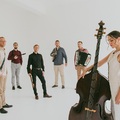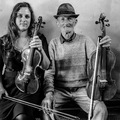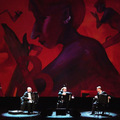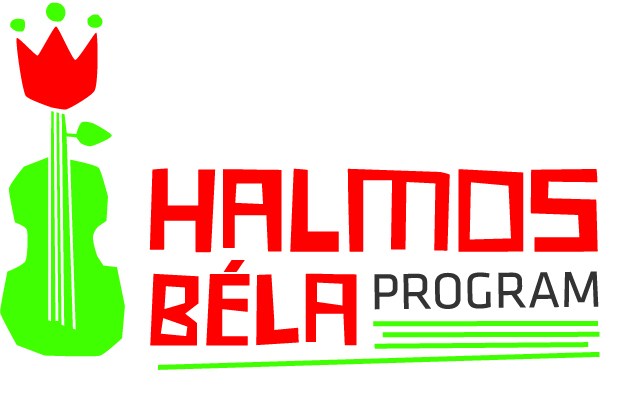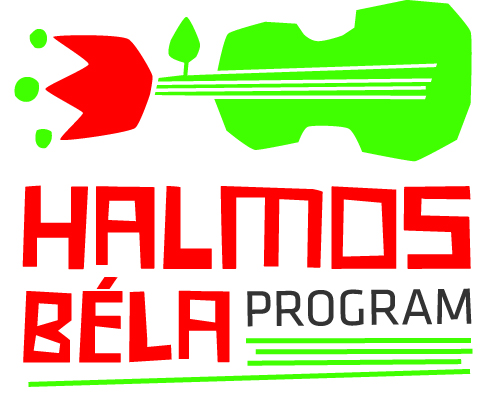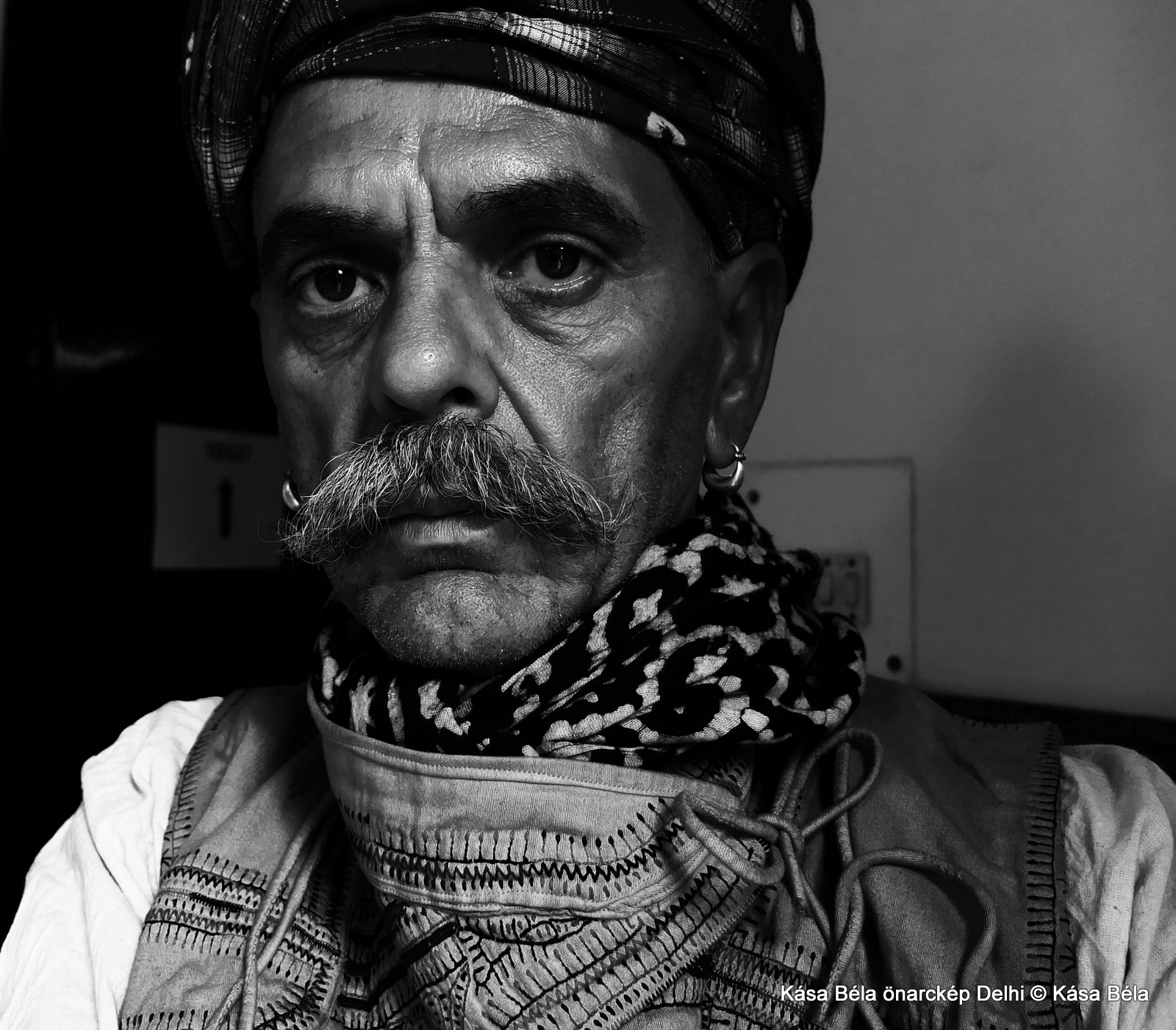 Béla Kása - Self portrait
Béla Kása - Self portrait
Had a beat-band at the age of 13, marvelled at the Beatles and the Rolling Stones on cheap photos, watched wide-eyed the Hungarian pioneers of beat music from the windows of the legendary Bosch-klub in Budapest. This bustling and fantastic world was what he had to leave behind in 1965 when he moved to West-Germany with his parents to a place that initially was as alien to him as it could get. He had no friends and the language was beyond him: he felt restless. At the age of 18-19 he began to attend concerts and 3-day festivals, where he had the chance to see The Doors and Jimi Hendrix, among others. In high school he started photography and got his degree at the Cologne College of Fine Arts at the Faculty of Art and Design in artistic photography. He had worked as a successful fashion and advertising photographer with the Stern and GEO magazines. Béla Kása portrait.
He had first visited Transylvania in 1973 and this trip had a profound effect on his life. He recalls: ”It was very new, something extraordinary, an unknown world unfolded before my eyes; I found my identity. In Germany, I photographed models and sports cars, listened to rock music, but it became somewhat boring for me after a while. In Transylvania, I witnessed the great number of Hungarians living outside Hungary, their music and dances. This is where I first saw how 3 acoustic musical instruments are able to keep 200 people entertained. It mesmerised me. As I slowly got to know the musicians, there was an easy choice to make: this is what I wanted to do. I noticed that while there were sound recordings, there were no pictures of these people whatsoever.”
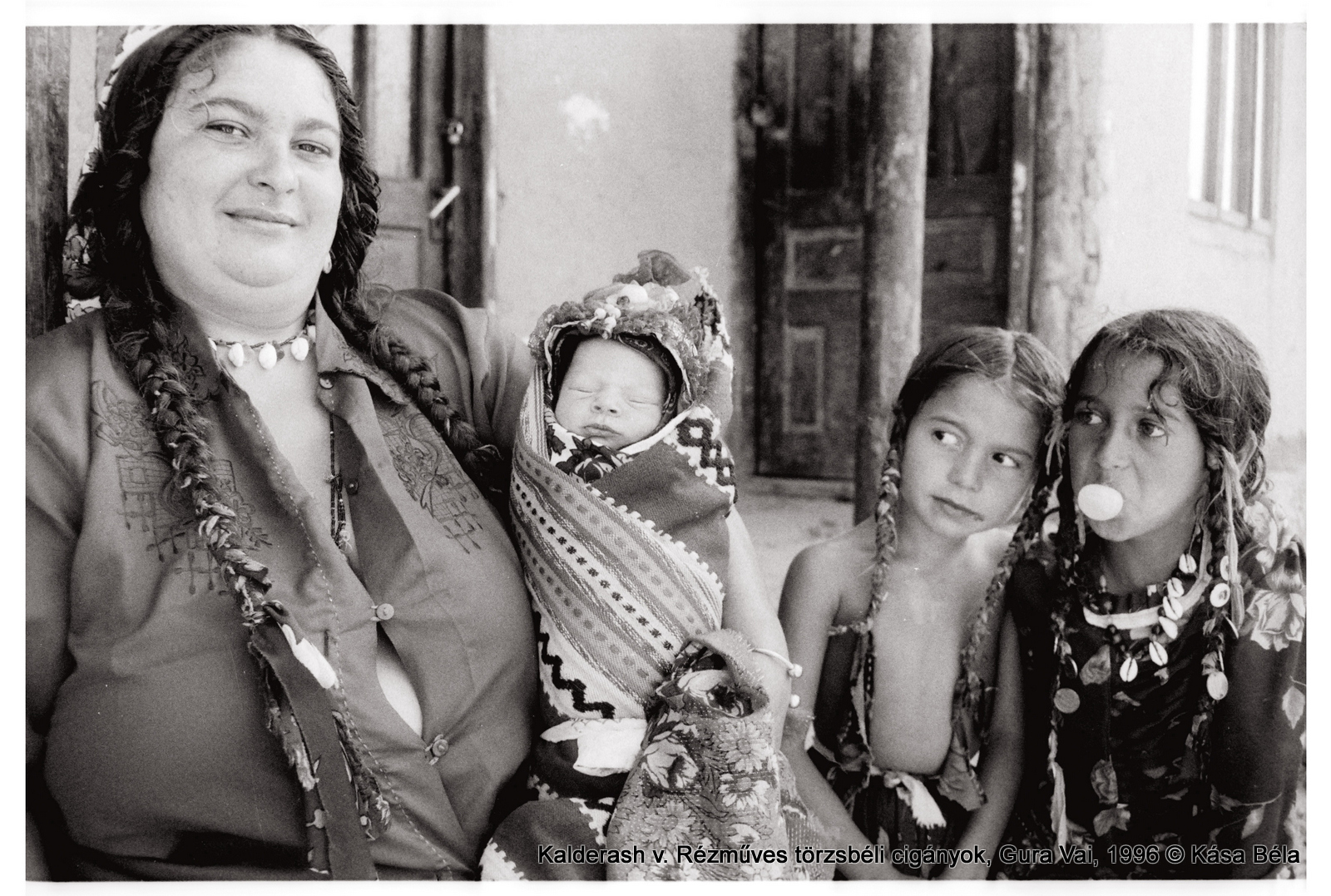 Kalderash gypsies
Kalderash gypsies
Initially he took pictures without any underlying concept, but with time he dived deeper into this world. “At first, I had no clear concept. I worked in Szék first, then came Bonchida, Palatka, Visa; I was told there were musicians everywhere. I was interested how people made music in those regions, and while there I took pictures too. I was also collecting music in the meantime. I wasn’t a professional, it was just something auxiliary I did. I recorded some music and interesting conversations.”
Today it seems incomprehensible but back then a family’s life was documented on not more than 8-10 pictures, from birth to death. “In that society, photos were a luxury as a photographer was expensive. Largely everybody had their wedding photos taken, then framed, with the poorest excluded. In musicians’ homes I could find more pictures. If there was a wedding the families would hire a photographer and they [the musicians] were also photographed. Then they would somehow get or buy these pictures. I could see many of these old photos and I photographed them myself.”
During his trips he would always bring something along with himself, something the locals needed, as he believed that it is one’s duty to give something back after taking something away.
“I brought medicine, food, violin strings, because they played on shoddy, reused strings and while I was there I gave them their photos. Once I gave Icsán Pityu an electric engine in exchange of a 3-string viola.”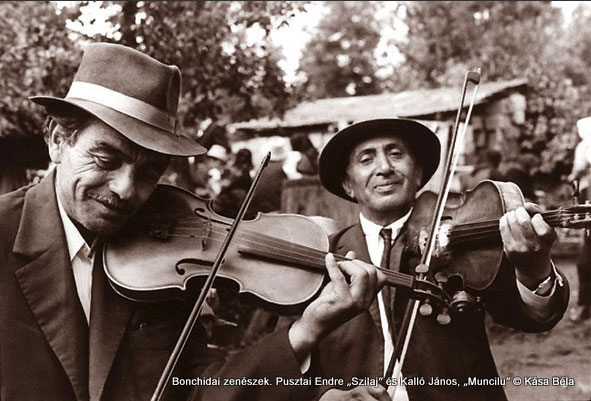 Musicians from Bonchida
Musicians from Bonchida
First, he used a Nikon, then he switched to a Leica M6. He always took black and white photos.
“I like photos that are darker in tone, with more contrast. I could imagine the Transylvanian atmosphere better in black and white than in colour: details and lines have more character and expression, colours do not exhaust your exes. The world wasn’t colourful there anyway.”
His photos are portraits, socio- and documentary photos at the same time, but Béla Kása rejects categorization. When asked about this, he replied: “These are mainly Béla Kása photos. Everyone sees something different in them, they touch everyone in various ways.”
During the years his audience grew and he established deep friendships with musicians. This has made it easier for him to approach them with his camera in hand, too.
“I noticed how a musician holds the instrument, a cigarette, how he plays music, his environment. This is also how I put more recent photos together. I thought to myself ‘the next time I’m going to visit him I’ll already know what hat he should wear, how he should look like and hold his instrument’. All I needed was to find the background. I’ve always been chasing the typical things. Aspired to achieve the balance between the body, the instrument and the face. I wanted to give back what I saw and felt while the artist played music or had a chat. Creating a connection and trust was paramount. If they could see that I was genuinely interested in their lives, knew a piece of their world, they trusted me. I slowly realised I have to race against the clock as news of more recent deaths kept coming in. So I tried to photograph the oldest first.”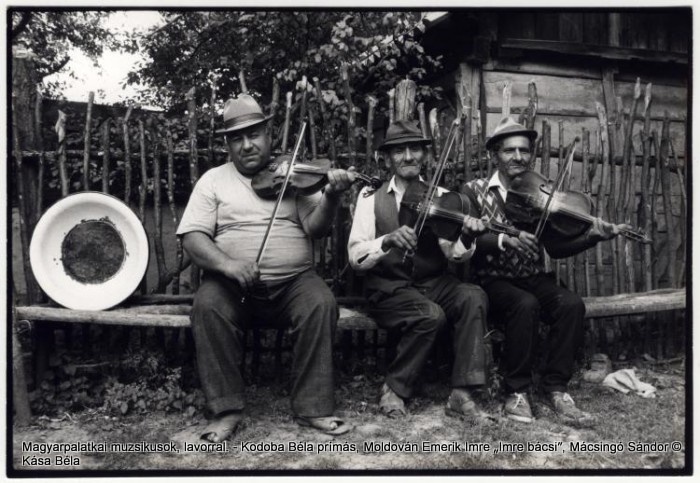 Musicians from Magyarpalatka with basin
Musicians from Magyarpalatka with basin
His pictures not only function as pieces at an exhibition, but play an important role in their subjects’ individual memory. “Somehow they treated them as their family photos. They would put them behind cupboard glasses or attach them to their wedding photo’s frames. As time went by they became ever more rumpled as their owners would again and again take them out and study them. I have been a guest of Béla Kodoba (1944-1999, prime violinist of the band Magyarpalatkai Banda) a thousand times, we even collected music together and he played music at the opening of my exhibition in Vienna. Then they got on the bus and went home. The next day the news of his death came. I went to his funeral and took some of his photos with me. They were much welcome, some were put directly on the coffin.”
The photos he left behind in many households enabled the making of his portrait film. “I had pictures in many places. Attila Magyar would also visit the musicians and noticed the many places he could see my photos and kept asking who had taken them. We met because of them and so the two films “Hazatérő képek” and “Fotográfiák” were made.”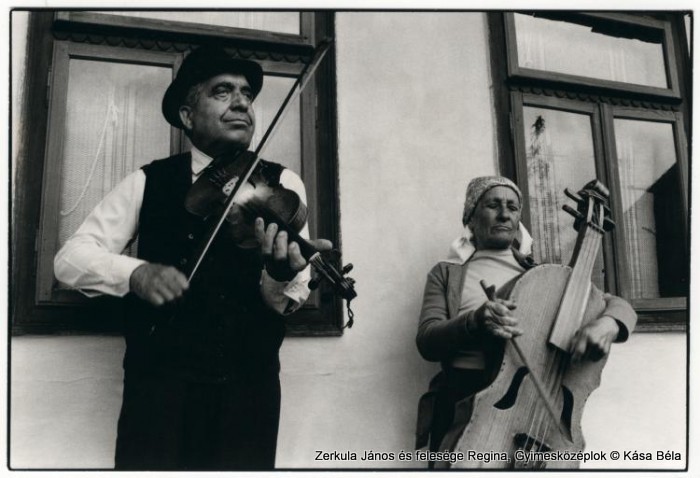 János Zerkula and his wife Regina Fikó
János Zerkula and his wife Regina Fikó
The world he had discovered in the seventies has disappeared. Village communities have become different, fallen apart, the old buildings are disappearing, the lifestyle changed. “Back in 1973, no one in Szék wore jeans, everyone had their beautiful folk costumes on. These dresses were hand sewn and weaved by mothers and grandmothers. The faces I used to love I can no longer see. The locals wore their lives on their faces. I am not very interested in baseball caps and electronic organs. There is a different world there, but I’d surely find something interesting. I’ve listened to musicians on Mediawave from Mócs (Mócs, Mociu, Kolozs, Romania) who played like the musicians from Palatka or the Mezőség.”
Today, when photos have lost their old contents and roles, Béla Kása’s pictures still have importance.
“I see they could be interesting. The young musicians today can see the faces of those musicians whose music they play. My photos attract interest from outside photography too. I remember once hearing that someone saw my pictures and thought they represent an old world, so the photographer surely can’t be alive. He was very surprised to learn the opposite. So my work has a place and a value.”
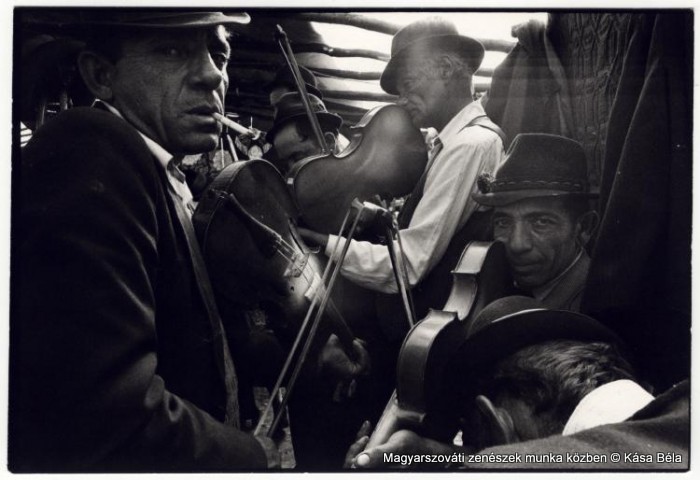 Musicians from Magyarpalatka
Musicians from Magyarpalatka
Béla Kása, 1952, Pécs
From 1965 he lived in Germany where he completed his studies. He got his degree at the Cologne College of Fine Arts in artistic photography. He worked for Europe’s biggest pictorial magazines, Stern and GEO. He moved back to Hungary in 1982, now lives in Tordas. From 1985 onwards, he has been taking photos of folk bands and musicians for album covers and propaganda materials. He is the photographer of the Muzsikás band.
In 1973 he travelled to Transylvania. Not only the landscape, the locals and the centuries-long traditions have affected him, but he also got enchanted by folk music. “My great mission in life: record the world to myself, my children and posterity, the world I could only marvel at, but not participate in, as I was born “too late”. But I’d like future generations to see a part of it. Exposition takes place in the brain, the soul and the heart.” –he says.
1993: he takes pictures of Győző Somogyi, the painter from Salföld
1994: becomes the photographer and photography editor of the MAG folk music magazine
1995: follows the travels of nomadic Gypsies with his camera in hand
1996: becomes a member of the Association of the Hungarian Photographers
1997: his photo album, titled “Erdélyi zenészek” is published both in English and Hungarian. It created the everlasting pantheon of the peasant and Gypsy musicians of Transylvania. Today it is impossible to define peasant music in the 20th century without it.
1997: for 2 years he takes photographs of 45 Transylvanian bands for the folk music collection titled “Utolsó óra”. He plays and collects music and takes photographs in Transylvania, Moldavia and Gyimes, but also visits half-nomadic camel herder tribes in India too.
Exhibitions
He has had exhibitions in several towns and villages in Hungary, like in the French Institute in Budapest, the Mediawave Festival in Győr, at the 39th Hungarian Film Expo in Szombathely, at the Contemporary Hungarian Institute of Photography in Pécs, in the Palace of Arts at the Festival of Folk Music…
Abroad: Norway, Sweden, Denmark, The Netherlands, Belgium, Germany, France, Austria, Czech Republic, Canada, USA, India, Kazakhstan, China…
His photos can be found in several private collections and museums all over the world.

A cikk megjelenését az NKA Halmos Béla Program Ideiglenes Kollégium támogatta.
A bejegyzés trackback címe:
Kommentek:
A hozzászólások a vonatkozó jogszabályok értelmében felhasználói tartalomnak minősülnek, értük a szolgáltatás technikai üzemeltetője semmilyen felelősséget nem vállal, azokat nem ellenőrzi. Kifogás esetén forduljon a blog szerkesztőjéhez. Részletek a Felhasználási feltételekben és az adatvédelmi tájékoztatóban.
